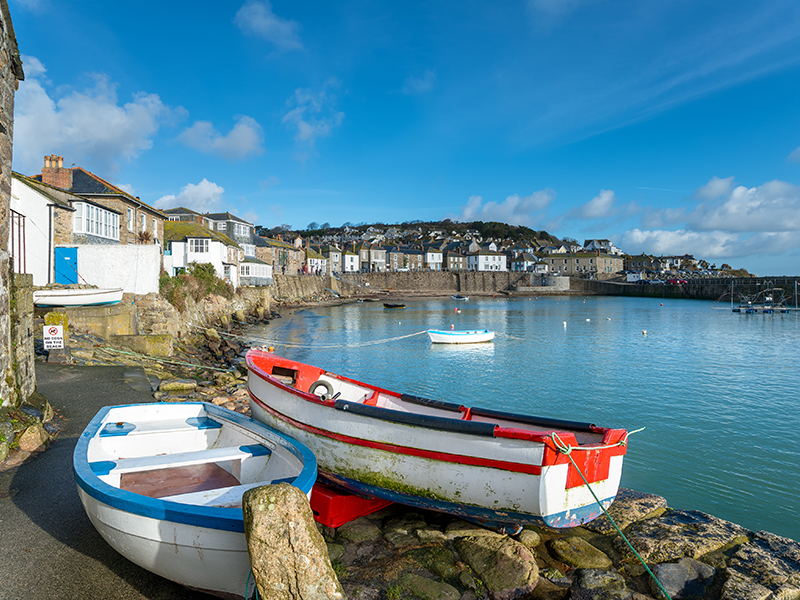Setting up a new life
5th October 2020

One of the freedoms of retirement is getting to choose where to live What makes a good place to retire? It’s one of the most basic questions people ask themselves when they start planning for retirement. It’s also one of the most crucial questions and one that, surprisingly, many people don’t give a lot of thought to.
If there was one perfect spot to match the needs of every retiree, deciding where to retire would be simple, but the reality is it’s really about personal preferences. One of the freedoms of retirement is getting to choose where to live, rather than being tied to a specific location due to previous work commitments.
Leaving major urban areas
New data from the Office for National Statistics has revealed that people of retirement age in England are leaving major urban areas and settling elsewhere. Using the data[1], this is a list of the Top Ten Retirement Migration Hotspots, where those aged over 65 are setting up a new life.
Dorset, Shropshire and Wiltshire are the English local authorities most likely to see an increase in the number of people aged over 65 moving in[2]. This corresponds with a broader trend of older people living in rural areas, by the coast or in areas of outstanding natural beauty.
Meanwhile, the local authorities that have seen older people leaving are more likely to be those in cities, with 87% of major urban areas experiencing net departures of those aged 65 years and over, as of June 2019. London saw the most departures (over 10,000), and boroughs within the city account for the majority of the top ten most exited areas, followed by Birmingham, Bristol and Manchester[3].
Driven by lifestyle considerations
In some cases, it is possible that financial reasons could play a role in people choosing to settle elsewhere. For instance, a homeowner aged over 65 choosing to sell the average property in Outer London (£424,200)[4] could receive a nest egg for their retirement if they were to buy the average property in Retirement Migration Hotspot Dorset (£324,707)[5], particularly with the recent changes to stamp duty rules.
However, these incidents of ‘townsizing’ – where someone frees up funds by buying a new property outside the city – are not necessarily universal. The average house price in Birmingham, for instance, is only £194,971 by comparison. This could indicate that people are also potentially driven by lifestyle considerations.
Living in a rural idyll or coastal retreat
There are a number of reasons why retiring to a rural or coastal location can be attractive, even if someone has lived their entire life in a major urban area. In many cases, the cash from selling a city home can create a nest egg and help with retirement income.
People might also want to move for health reasons, particularly in light of the challenges presented by the coronavirus (COVID-19) crisis. However, for many people, the attraction will be the perceived slower pace and better quality of life. Living in a rural idyll or coastal retreat is also a long-term aspiration for many people, and retirement provides an opportunity to realise that dream.
Pros and cons of day-to-day living
If many different locations appeal to you, get out and see them. Starting years before retirement, visit places and then narrow down your choices to three or fewer. Spend a few weeks in each location to carefully weigh the pros and cons of day-to-day living.
Don’t spend all of your time near the hotel. Instead, go out and visit neighbourhoods to get a sense of the people and the overall community engagement. For those who have the means, buying a second home during your working years can offer a pre-retirement trial period.
Source data:
Opinium Research online interviews for Legal & General Retail Retirement
among a nationally representative panel of 2,004 over 50s from 15–18 May 2020.
[1] https://www.ons.gov.uk/peoplepopulationandcommunity/birthsdeathsandmarriages/
ageing/articles/livinglongertrendsinsubnationalageingacrosstheuk/2020-07-20#migration-of-older-people-is-driven-by-movement-away-from-major-
cities-to-rural-and-coastal-areas – Section 7
[2] https://www.ons.gov.uk/peoplepopulationandcommunity/birthsdeathsandmarriages/
ageing/articles/livinglongertrendsinsubnationalageingacrosstheuk/2020-07-20#migration-of-older-people-is-driven-by-movement-away-
from-major-cities-to-rural-and-coastal-areas – Section 7, Figure 3
[3] https://www.ons.gov.uk/peoplepopulationandcommunity/birthsdeathsandmarriages/
ageing/articles/livinglongertrendsinsubnationalageingacrosstheuk/2020-07-20#migration-of-older-people-is-driven-by-movement-away-
from-major-cities-to-rural-and-coastal-areas – Section 7
[4] https://www.ons.gov.uk/economy/inflationandpriceindices/bulletins/
housepriceindex/march2020#london-house-prices – Section 5
[5] https://www.ons.gov.uk/visualisations/dvc769/datadownload.xlsx –
Mean average of all ‘Dorset’ small areas (Source: https://www.ons.gov.uk/peoplepopulationandcommunity/housing/bulletins/
housepricestatisticsforsmallareas/yearendingseptember2019#median-price-paid-for-houses-in-local-areas)
